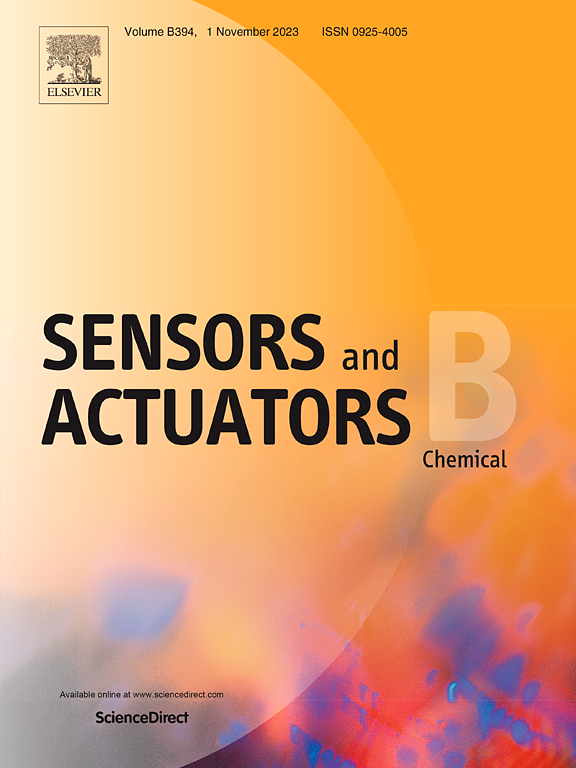揭示温度对电化学、基于dna的传感器纠正信号波动的影响
IF 8
1区 化学
Q1 CHEMISTRY, ANALYTICAL
引用次数: 0
摘要
为现实世界的应用开发方便和易于使用的分析工具需要传感方法,能够快速,无试剂和原位定量不同的分子目标。电化学、基于DNA (E-DNA)的传感器通过利用电极结合、氧化还原报告修饰的DNA探针在目标结合时的构象变化来满足这些需求。识别事件改变了来自氧化还原报告体的电子转移速率,这可以用方波伏安法通过同步激发频率和电荷转移速率来监测。然而,表面结合传感过程的动力学性质使得信号强烈依赖于温度,这是一个被广泛忽视的方面,并且限制了E-DNA传感器在温度控制环境中的应用。在这里,我们探讨了电化学信号、方波频率和温度在不同DNA结构之间的关系。通过这样做,我们确定了最容易受到温度引起的信号波动影响的架构,并制定了两种直接的校正策略。这些方法对于电化学适配体(E-AB)传感器特别有效,可以在22ºC至37ºC的宽温度范围内实现精确和稳定的测量。通过消除温度对信号传导的显著影响,我们拓宽了E-DNA传感器的适用性,增强了它们在即时检测、连续分子监测和其他温度波动不可避免的现实场景中的性能。本文章由计算机程序翻译,如有差异,请以英文原文为准。

Revealing the impact of temperature on electrochemical, DNA-based sensors to correct signaling fluctuations
Developing convenient and easy-to-use analysis tools for real-world applications requires sensing approaches that enable rapid, reagentless, and in situ quantitation of diverse molecular targets. Electrochemical, DNA-based (E-DNA) sensors meet these needs by utilizing conformational changes in electrode-bound, redox reporter-modified DNA probes upon target binding. The recognition event alters the electron transfer rate from the redox reporter, which can be monitored using square wave voltammetry by synchronizing the excitation frequency with the charge transfer rate. However, the kinetic nature of the surface-bound sensing process makes signaling strongly temperature-dependent, an aspect that has been widely overlooked and that restricts the application of E-DNA sensors to temperature-controlled environments. Here, we explore the relationship between electrochemical signal, square wave frequency, and temperature across different DNA constructs. By doing so, we identified the architectures most susceptible to temperature-induced signal fluctuations and developed two straightforward correction strategies. These approaches are particularly effective for electrochemical, aptamer-based (E-AB) sensors, enabling accurate and stable measurements over a wide temperature range, from 22 ºC to 37 ºC. By eliminating the significant influence of temperature on signaling, we broaden the applicability of E-DNA sensors, enhancing their performance for point-of-care testing, continuous molecular monitoring, and other real-world scenarios where temperature fluctuations are unavoidable.
求助全文
通过发布文献求助,成功后即可免费获取论文全文。
去求助
来源期刊

Sensors and Actuators B: Chemical
工程技术-电化学
CiteScore
14.60
自引率
11.90%
发文量
1776
审稿时长
3.2 months
期刊介绍:
Sensors & Actuators, B: Chemical is an international journal focused on the research and development of chemical transducers. It covers chemical sensors and biosensors, chemical actuators, and analytical microsystems. The journal is interdisciplinary, aiming to publish original works showcasing substantial advancements beyond the current state of the art in these fields, with practical applicability to solving meaningful analytical problems. Review articles are accepted by invitation from an Editor of the journal.
 求助内容:
求助内容: 应助结果提醒方式:
应助结果提醒方式:


